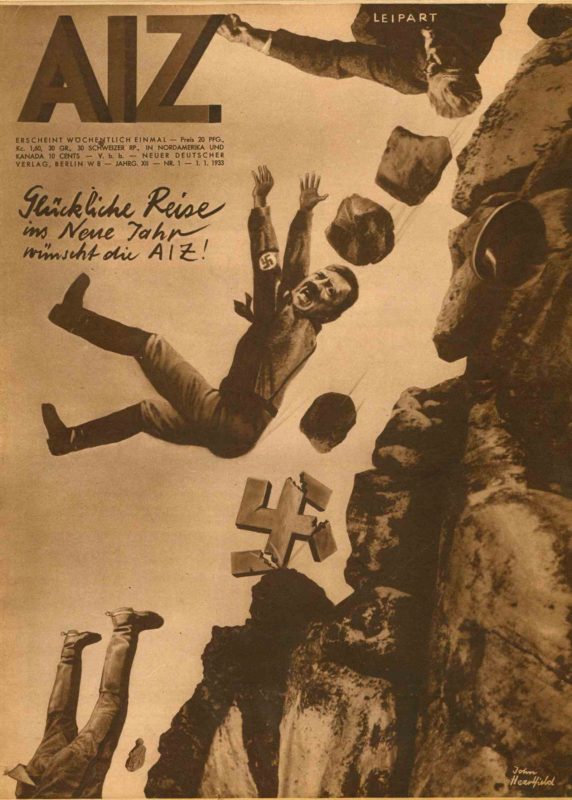
John Heartfield (born Helmut Herzfeld) was an important and ground-breaking artist in Germany, known as the inventor of photomontage. He anglicized his name in protest against the anti-British sentiments prevalent in Germany after the First World War. He was a member of Berlin Club Dada, later assisting with the Erste International Dada-Messe exhibition of 1920. His first photomontages were created for publications associated with the Dada movement as well as book jackets for the publishing house run by his brother, Malik-Verlag.
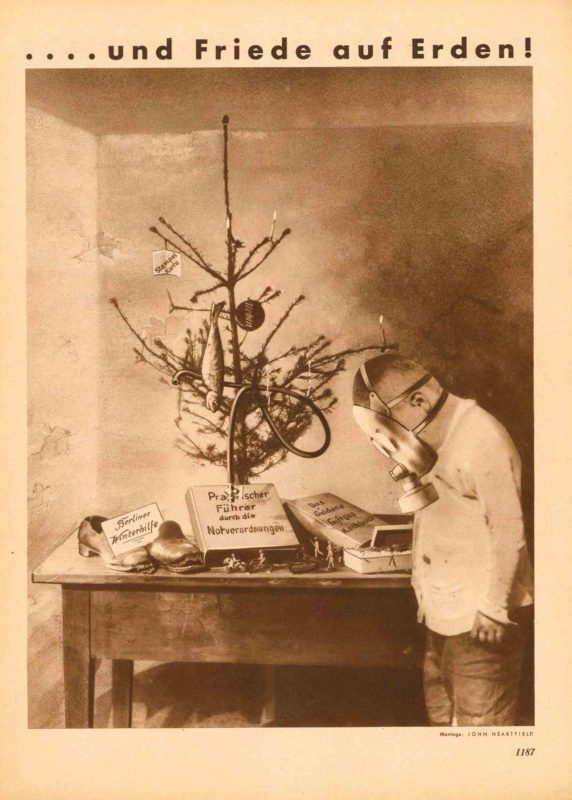
Heartfield is called by some the creator of photomontage, and is best known for having helped to pioneer the use of art as a political weapon, primarily through his famous anti-Nazi and anti-fascist photomontages. These collages were not simple combinations of pictures and text, but appropriated and reused photographs to achieve powerful political effects. He chose recognizable photographs of politicians or events from mainstream news sources, and then took apart and rearranged the images to change their meaning and provide a commentary on the current state of the country. His aim was to expose the dangers and abuses of power within the Nazi regime by highlighting their incompetence, greed, and hypocrisy. His most impactful images played with scale and stark juxtaposition to get their point across. His work shadowed and reflected the chaos and agitation present in Germany in the 1920’s and 1930’s, as it shifted towards social and political upheaval.
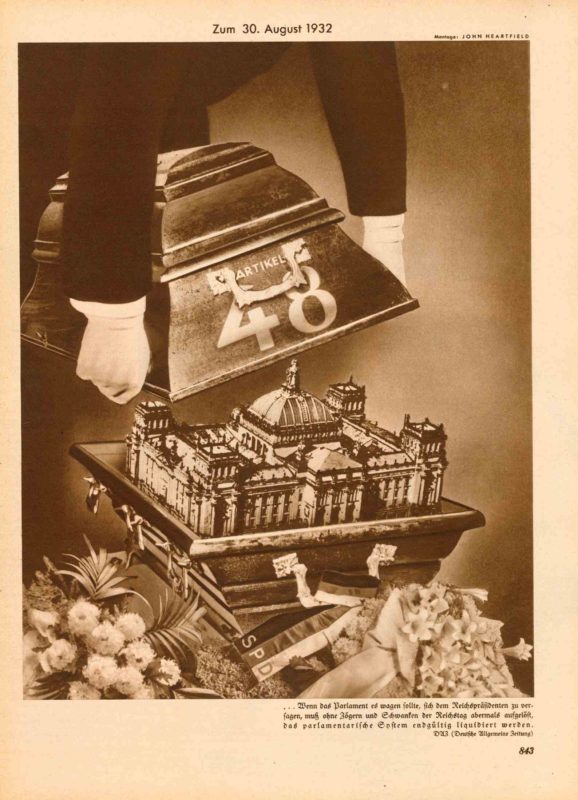
Heartfield’s images illustrating these tensions were so powerful that they helped to transform the photomontage into a powerful tool of mass communication. Some of his most impactful works were even mass-produced and distributed as posters in the streets of Berlin between 1932 and the Nazi rise to power in 1933, when the SS broke into Heartfield’s apartment and he was forced to flee Germany. Many of his best-known images were created for and published in the pages of AIZ – Die Arbeiter-Illustrierte-Zeitung, an illustrated left-wing worker’s journal published in Berlin, beginning in 1930.
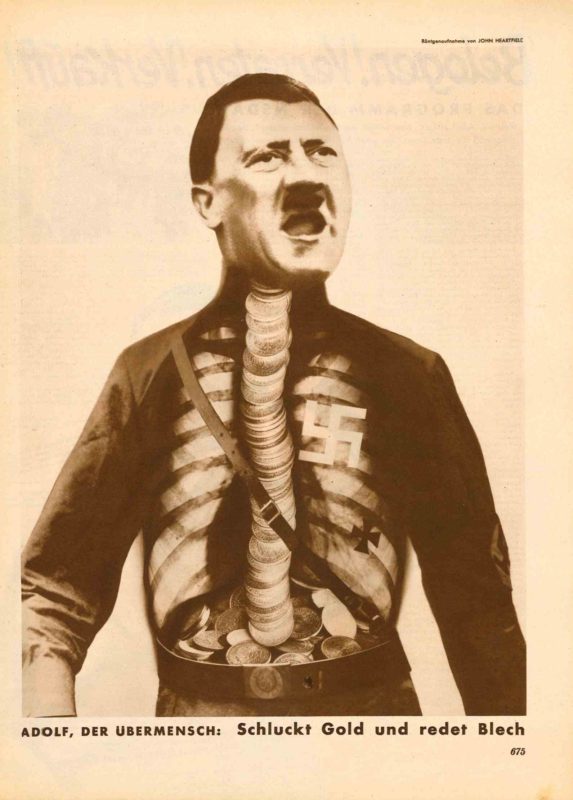
Most of his sharpest satire was reserved for Adolf Hitler, parodying his poses, gestures, and symbols associated with the dictator. One such example is this image titled “Adolf, the Superman: Swallows Gold and Spouts Junk”. Heartfield has overlaid a well-known photograph of the Führer with a chest x-ray and replaced his heart with a swastika. The x-ray reveals coins collecting in his stomach. Heartfield’s image references a cartoon by Honoré Daumier, and alludes to the large contributions that industrialists were making to the Nazi Party in contradiction to its supposed roots in socialism. This image made such an impact that it was reproduced as a political poster in 1932.
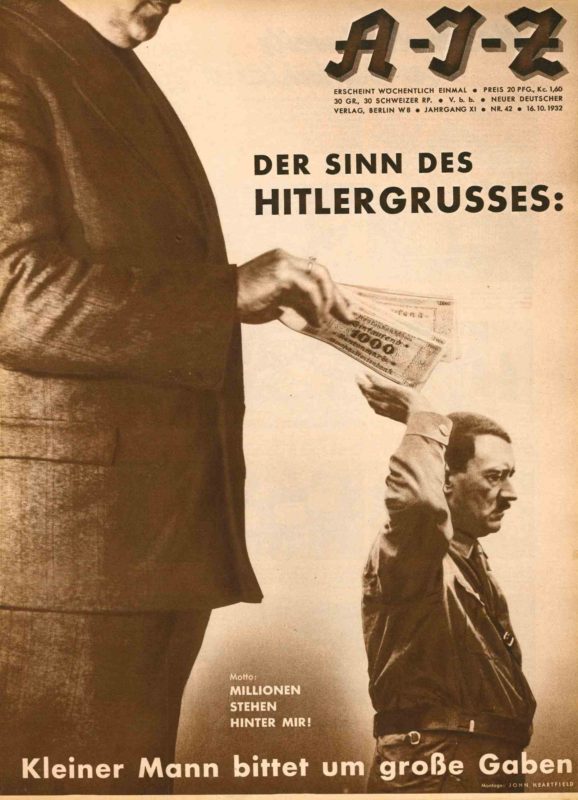
Another example is “Der Sinn des Hitlergrusses”. Heartfield exaggerates the difference in size between Hitler and the man behind him, handing him money, to comment again on Hitler’s relationship to Germany’s wealthy industrialists, a puppet accepting financial influence and assistance.
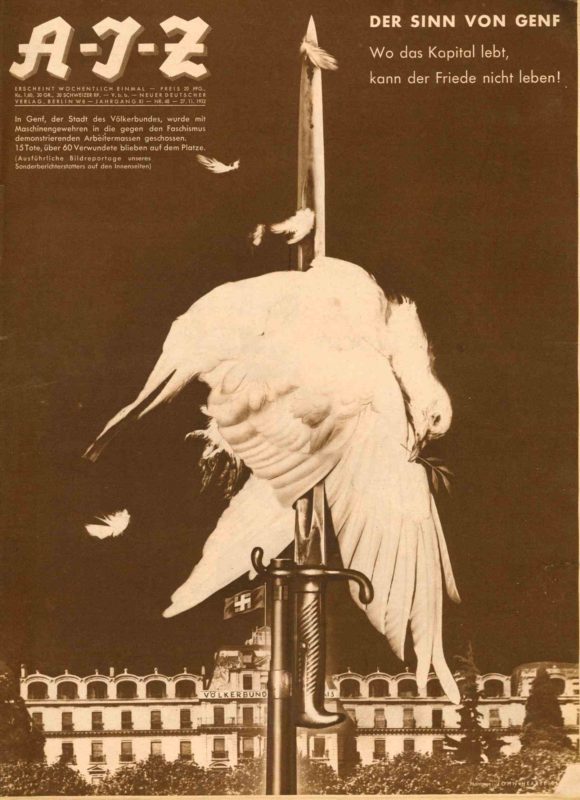
“The Meaning of Geneva” depicts a white dove, the symbol of peace, impaled on a bayonet, a symbol of modern warfare. In the background is the League of Nations palace, where the Geneva disarmament conference took place in November 1932. The text accompanying the image reads, “Where Capital Lives, There Can Be No Peace!”
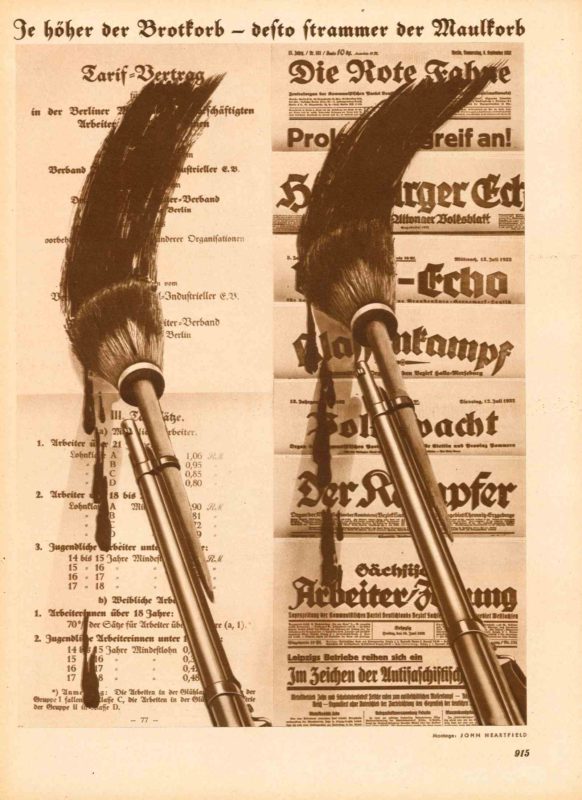
(Heartfield Photomontages) – AIZ. Die Arbeiter-Illustrierte-Zeitung. Year X, No. 1 (n.d., 1931) through Year XII, No. 9 (n.d., 1933). 112 total issues of the illustrated left-wing German worker’s journal, published in Berlin from 1924 to March of 1933, and afterward in Prague and then Paris until 1938, anti-Fascist and pro-Communist in stance, published by Communist political activist Willi Münzenberg and best-known for its propagandistic photomontages by John Heartfield, of which 26 are included in this collection, and including coverage of current events, women’s issues, and gender relations, original fiction and poetry, and above all photography, primarily submitted by amateur photographers. Profusely illustrated throughout. Some very minor defects or small repairs, overall excellent condition. Folio. Original illustrated wrpps. Berlin (Neuer Deutscher Verlag) 1931-1933. (48927)
Before AIZ began, a monthly magazine called Sowjet Russland im Bild (Soviet Russia in Pictures) was published by Internationale Arbeiter-Hilfe (Workers International Relief), a group led by Willi Münzenberg. The magazine contained reports about the recently created Russian Soviet state and the IAH, and in 1922 began reporting on the German proletariat. As the paper expanded coverage and attracted prominent contributors such as George Grosz, Käthe Kollwitz, Maxim Gorki, and George Bernard Shaw, it grew rapidly and reappeared on November 30, 1924 with the new name of AIZ and a new format. Over time it became the most widely read socialist pictorial newspaper in Germany.
The issues included in this collection are: 1931 (Year X): Nos. 1-52; 1932 (Year XI): Nos. 1-52 (lacking no. 49 which was confiscated by the censorship authorities); and 1933 (Year XII): Nos. 1-9 (9 was the final issue published in Berlin after Hitler seized power).